Welcome friends.
It is another interesting topic for the well under review knee Osteoarthritis has been a age related disease that has continued to affect our parents. However, this has found its way into the presence of our young becuase of sedentary lifestyles. Lets get started.
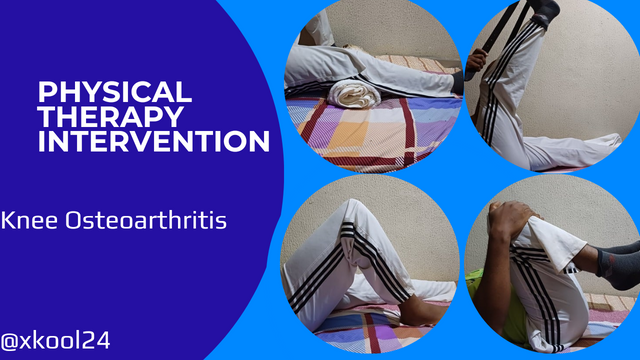 designed in canva designed in canva |
|---|
Knee Osteoarthritis is a degenerative disease that affects the knee joint. An ailment mostly common with age but this has deferred this age pattern due to the sedentary life pattern of humans. It is a gradual wear and tear that occur in the knew cartilage.
The affected knew is observed to pass through pains, stiffness during movement, and swelling sometimes. This is sometimes called old people sickness because of the age pattern but of recent, there are other causes like obsesity, injuries, and genetic factors.
When we observed the degenerative nature of the bones, the rub off on each other and hence the knee disease that comes with largely discomfort. Symptoms tend to increase as this wear and tear continues with activity. However, we can reduce this with change of lifestyle, physical therapy and medication as well as sugery.
To degress alittle further, knee OA is classified based on location, severity caused, and underlying illness. Theare the main three focal point they could be observed for possible diagnosis.
Classification by Location:
We have the Patellofemoral Osteoarthritis which is a situation whereby the cartilage under the patella (knee cap) is affected. When we see such effect under the knew cap, it could be linkened to be the Patella OA.
We have a situation where the cartilage between the femur and tibia are affected. That is between the thigh and shin bone. This dieases is called "Tibiofemoral Osteoarthritis".
Lastly we have a situatiin where the cartilage under thr knee cap, thigh, and shin bones are all affected. Very complicated situation called Bicompartmental Osteoarthritis.
Classification by Severity:
As the name severity, this determines the pain level of discomfort therein. We have the following;
- The Mild Osteoarthritis stage which occurs with a very minimal cartilage loss as well as joint space narrowing without a noticeable occurrence of ailment.
- The Moderate Osteoarthritis stage comes with and obvious and noticeable cartilage loss as well as joint space narrowing. The pain level at this stage is a little higher than what is observed in the mild stage.
- The Severe Osteoarthritis stage which is a stage with more significant of those symptoms. Both the cartilage loss and joint space narrowing are obviously present during assessment.
Classification by Underlying Causes:
This classification is based on the mode in which this disease occurs. We have primary and secondary modes which include;
- Primary Osteoarthritis Mode - Mainly age related.
- Secondary Osteoarthritis Mode: mainly from trauma, obesity, and genetic dispositions. -
We can diagnose knee Osteoarthritis through;
- Medical History assessment:
This is done through taking the medical history of patient which may invlude previous knee trauma and injuries of any kind, sugeries if any, as well as prevailing symptoms present at the time of examination.
- Physical Assessment
This is observed by noting range of motion of knee when in use, the swelling andntenderness of affected knee, as well as pain level while in use.
- Imaging & Laboratory Assessment
This may be done to get observations a step further from the two above. MRI and X-ray procedures are vital to give clearer damage and situation at hand. Laboratory test is also another way of ascertain situation with a more precision of disease type.
Heel Slides exercise
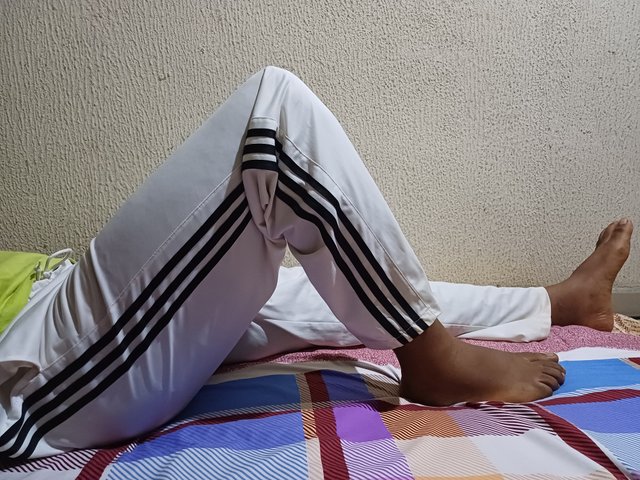
This is done to help resuce the friction observed in the knee for mobility. It helps strengthen the muscle area around knee. One of the best exercises to resuce stiffness of knees.
William Flexion ( Knee to Chest exercise)
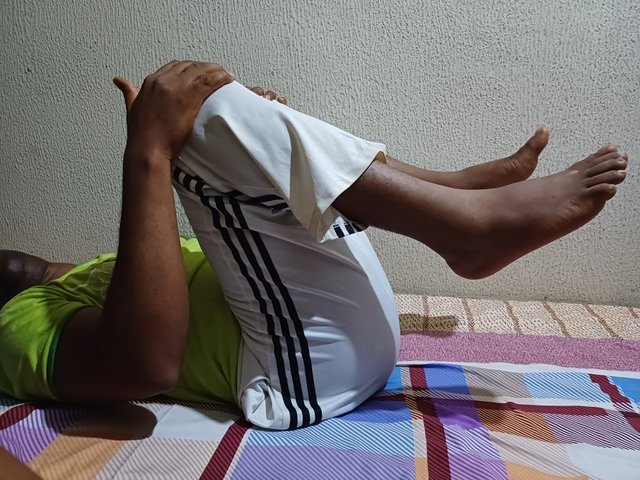
This particular knee exercise came with little difficulty with bending the knee both front and back movement. However, it was done and the essence is to help improve knew flexibility and as well stretch the hamstring muscles.
Knee isometrics
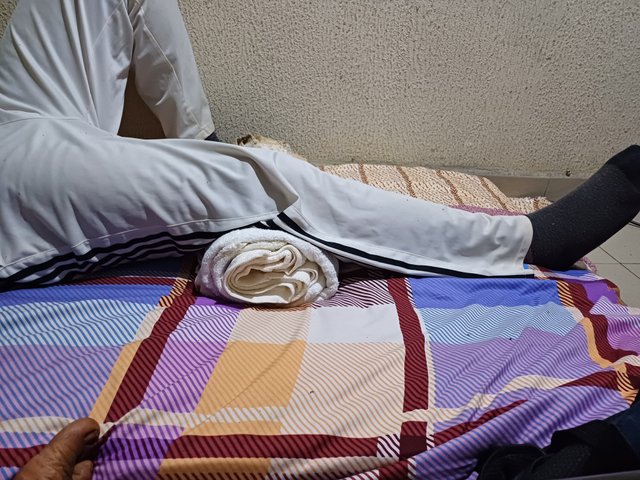
This is a knee and hip exercise to help improve the knee joint health through ROM. Though looks a little easy to perform but very effective in the knee joint for improved muscle strength.
Calf & Hamstring Stretch
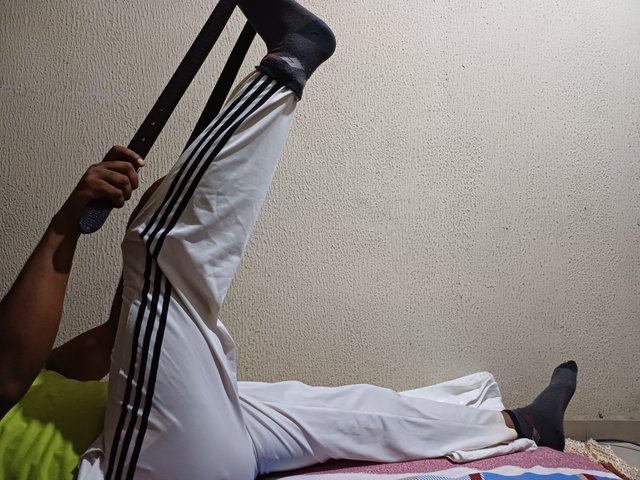
This may be another little difficult task in the chosen tasks of the day. This helps to improve the shortened muscles and stretching all forward was tasking. Bith ankle, knee and the hip joints are all improved during th is exercise.
Exercise has remained one way we can improve.our general body system. The knee, hip, and ankle remains the carrying part of the body which are vital if we must continue to have adequate movement.
Immediately after the first exercie which was the "Heel Slides exercise", I started feeling fatique doen in my leg muscles. I know that was expected and also noted that work has been done to warrant such feelings.
I also observed some little sensation in the knee area to show that work has been done. I was entirely relieving form me and as well refreshing.
I am glad to have participated. I hope to invite @chilaw, @@@rosselena, @ninapenda.
Thank you for understanding the lesson and sharing your assignment; I hope that you will enjoy this week's lesson and try to implement it in your life if you see any such case.
Observations
Task 1 (2.9/3)
You have shared a good knowledge about knee osteoarthritis types on a different basis, especially based on severity. You shared about types in detail. But there are 4 grades of knee Osteoarthritis, not 3. I appreciate your effort.
Task 2 (2.7/3)
In the second question, you tell us about the physical examination, history taking, investigations performed and diagnosis. But you can add 1 or 2 ROM or ADL tests to confirm the diagnosis. X-ray and MRI are the best tests of choice to confirm the diagnosis. Good.
Task 3 (3.8/4)
You try the heel slides, calf & hamstring stretch, William Flexion ( knee to chest exercise), and Knee Isometric ( Knee flexion ). But while performing the stretching exercises, try to keep your leg straight. Don't bend towards your chest or upper body. Remember to always apply a heating pad before performing these exercises. I appreciate your efforts.
Overall you made a good attempt to answer all the questions. I appreciate your efforts. But next time try to avoid the above written suggestions. Keep learning and try to implement your knowledge to the people suffering from knee Osteoarthritis. If you feel fatigued after performing the first exercise, that means, you aren't actively using your muscles, especially not doing any workout or walking. Try to adapt anything to keep your muscles active and use them in daily activities more than usual so that you don't feel tired by doing such workouts. Thank you.
Downvoting a post can decrease pending rewards and make it less visible. Common reasons:
Submit
https://x.com/xkool24/status/1853947389813408092?t=v3mpEeCb8MOlQoWShsjiMA&s=19
Downvoting a post can decrease pending rewards and make it less visible. Common reasons:
Submit